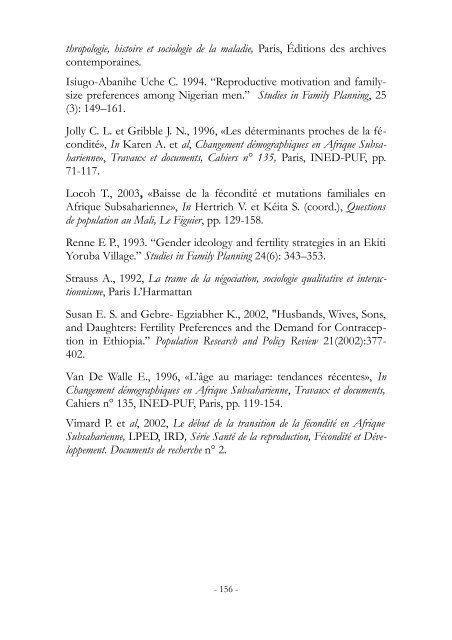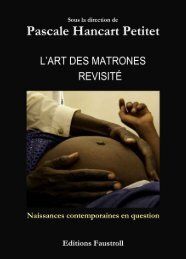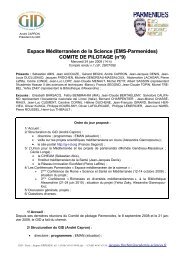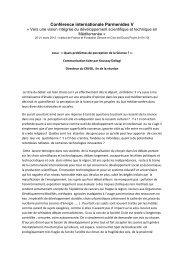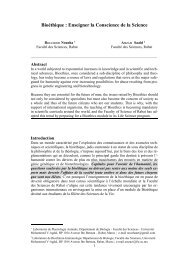You also want an ePaper? Increase the reach of your titles
YUMPU automatically turns print PDFs into web optimized ePapers that Google loves.
thropologie, histoire et sociologie de la maladie, Paris, Éditions des archives<br />
contemporaines.<br />
Isiugo-Abanihe Uche C. 1994. “Reproductive motivation and familysize<br />
preferences among Nigerian men.” Studies in Family Planning, 25<br />
(3): 149–161.<br />
Jolly C. L. et Gribble J. N., 1996, «Les déterminants proches de la fécondité»,<br />
In Karen A. et al, Changement démographiques en Afrique Subsaharienne»,<br />
Travaux et documents, Cahiers n° 135, Paris, INED-PUF, pp.<br />
71-117.<br />
Locoh T., 2003, «Baisse de la fécondité et mutations familiales en<br />
Afrique Subsaharienne», In Hertrich V. et Kéita S. (coord.), Questions<br />
de population au Mali, Le Figuier, pp. 129-158.<br />
Renne E P., 1993. “Gender ideology and fertility strategies in an Ekiti<br />
Yoruba Village.” Studies in Family Planning 24(6): 343–353.<br />
Strauss A., 1992, La trame de la négociation, sociologie qualitative et interactionnisme,<br />
Paris L’Harmattan<br />
Susan E. S. and Gebre- Egziabher K., 2002, "Husbands, Wives, Sons,<br />
and Daughters: Fertility Preferences and the Demand for Contraception<br />
in Ethiopia.” Population Research and Policy Review 21(2002):377-<br />
402.<br />
Van De Walle E., 1996, «L’âge au mariage: tendances récentes», In<br />
Changement démographiques en Afrique Subsaharienne, Travaux et documents,<br />
Cahiers n° 135, INED-PUF, Paris, pp. 119-154.<br />
Vimard P. et al, 2002, Le début de la transition de la fécondité en Afrique<br />
Subsaharienne, LPED, IRD, Série Santé de la reproduction, Fécondité et Développement.<br />
Documents de recherche n° 2.<br />
- 156 -


